Introduction
It’s been a long wait, principally due to difficulties sourcing materials as a result of the pandemic, but finally, here is the Leica 21mm Super-APO-Summicron-SL. I think we were all expecting the 24mm to be the sixth lens in the range (after the 90, 75, 50, 35, 28mm lenses), but perhaps 24mm has fallen out of favour. At any rate, here is the 21mm.
I have had a copy of this lens on and off for a while, so I’ve had a lot of time to learn about it, and how to make the most of it.
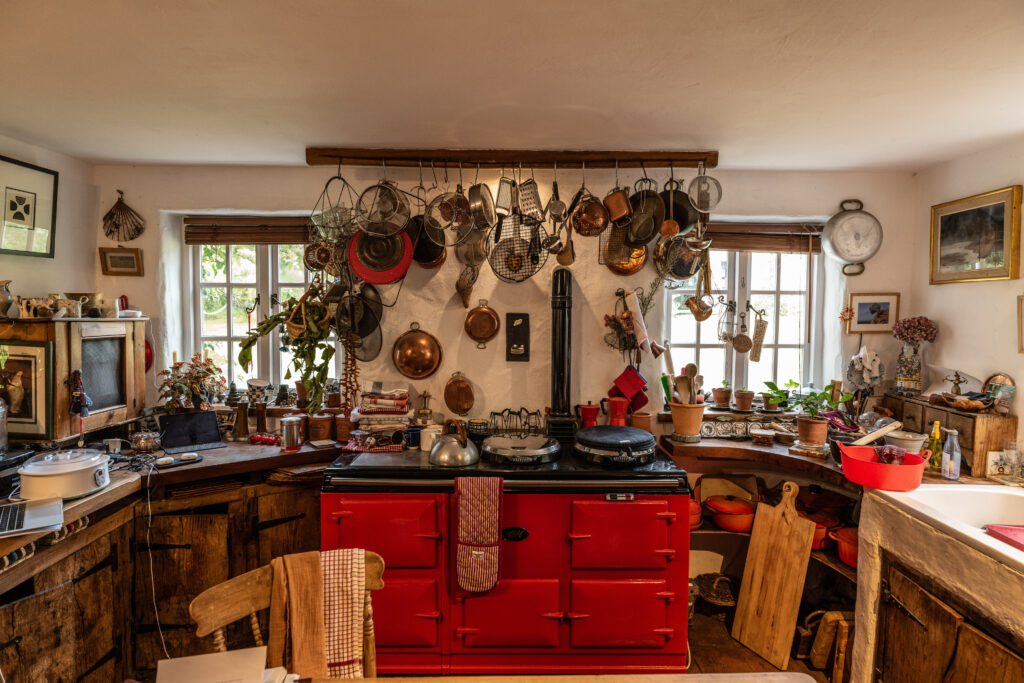
Leica SL2 1/40th f/4 1000 ISO
APO lenses
This is a subject that has caused much confusion (and conviction) among people all over the internet, and I thought it might be worth reverting to the subject here. If you’ve read it all before, then you can skip this bit!
So, what exactly is an APO lens? The truth is that it’s rather a vague term and not to be confused with Apochromatic, which isn’t vague at all!

Leica SL2 1/125th f/8 100 ISO
Longitudinal Chromatic Aberrations occur when different colours focus at different distances from a lens and cause colour fringing around high contrast edges. An Achromatic lens is one which is corrected to ensure that two wavelengths of light focus in the same plane — an Apochromatic lens is where 3 wavelengths of light focus on the same plane. This is well and good, but it doesn’t cover the bokeh, so although it’s relevant where an image is completely in focus, it isn’t necessarily when it’s not.

Leica SL2 1/250th f/8 100 ISO
With Leica’s APO lenses, chromatic aberrations are reduced using low dispersion glass elements in the lens design. The intention is to reduce chromatic aberration in all areas, both in focus and out of focus. As more APO lenses have appeared, they have refined the design so that they have become more and more successful, culminating in the SL Summicron lenses (and the 35 & 50 APO Summicron-M lenses).
So, for practical purposes, we might define an APO lens as one which contains one or more low dispersion glass elements.

Leica SL2 1/320th f/13 100 ISO
The official Leica position
Indeed, Leica has made this statement:
Apochromatic and more
The prefix ‘APO’ in the name denotes Leica lenses with the best imaging performance. From telephotos to wide-angles, all Summicron-SL lenses in the SL-System portfolio bear these coveted three letters before their names. For a long time, this distinction was reserved exclusively for telephoto lenses, as only they could achieve the exceptional quality required. It is now over 40 years since the first APO lens built by Leica made its appearance — the APO-TELYT-R 180 mm f/3.4, in 1975. In 2012, the APO-Summicron-M 50mm f/2 ASPH. became the first standard lens to bear this prestigious prefix.
Thanks to technological progress, more complex construction and new manufacturing methods employed in the SL-System; the design engineers were able to perfectly maximise the optical performance. To us at Leica, APO means more than just the correction of longitudinal chromatic aberration, for which the purely scientific definition of the term ‘apochromatic’ stands.

Leica SL2 1/320th f/13 100 ISO
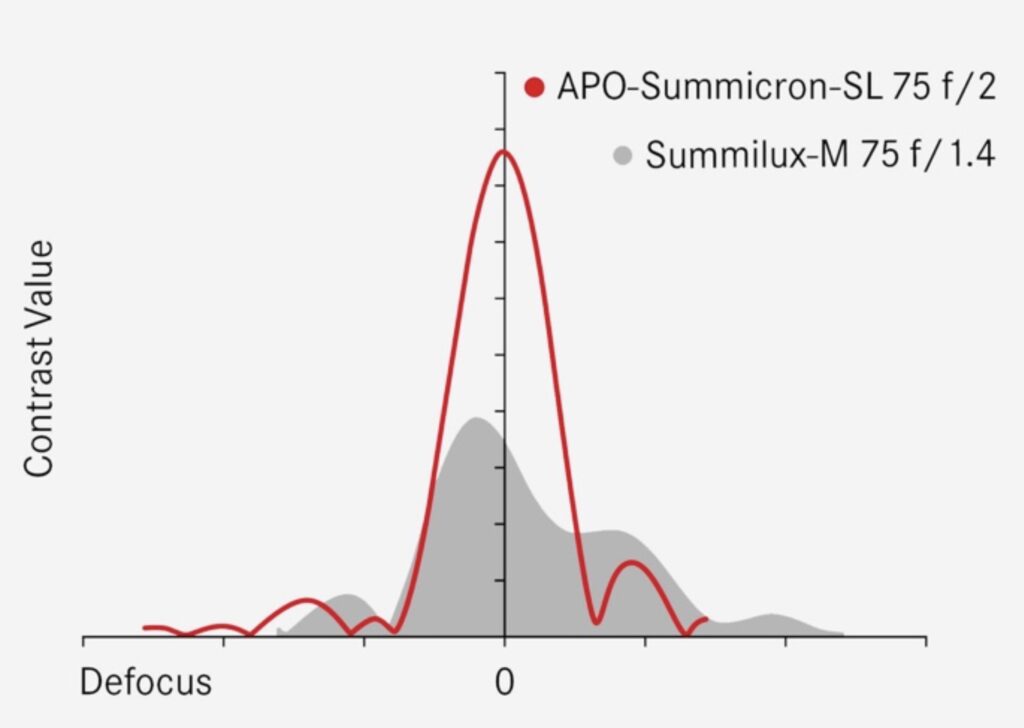
Here, Leica is emphasising that the Leica APO lenses (at least the modern ones) aim to remove chromatic aberrations completely.
But this is not just about Chromatic aberration. As Peter Karbe explained to me, the lack of aberrations results in much more contrast at the point of focus than in an ordinary lens, and that this contrast falls off rapidly in front and behind the point of focus. This means that an f/2 lens can appear to have the same depth of field as an f/1.4 lens (or even less in the case of the 75 f1.4 compared to the 75 f2 APO M lens).
I think that this rapid fall off in contrast confers a special look on the Leica APO lenses, which are very detailed when in focus, but with a quick roll-off into gentle bokeh: Indeed, I think the whole look is ‘gentle’.
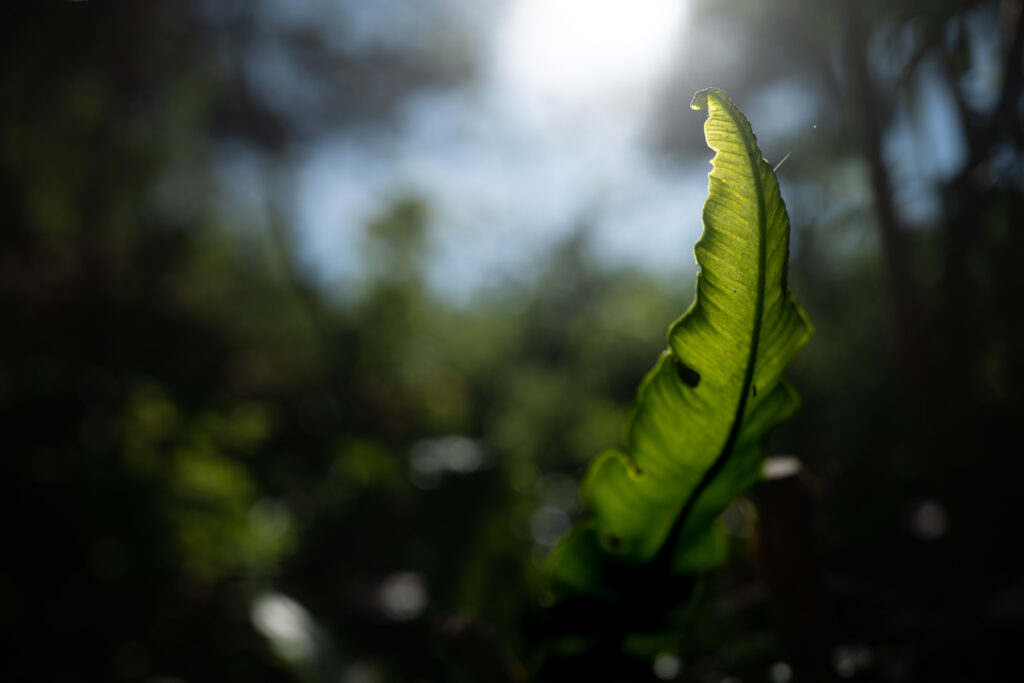
Leica SL2 1/8000th f/2 100 ISO
It’s important to make the distinction between ‘sharpness’ and ‘detail’. Very often, older lenses, when stopped down, can appear extremely ‘sharp’ and even ‘crunchy’, this is because of tiny amounts of longitudinal CA enhancing the edges of high contrast areas. Leica APO lenses might superficially look less ‘sharp’ but actually show more detail than their less sophisticated cousins.

Leica SL2 1/80th f/7.1 100 ISO
Leica 21mm Super-APO-Summicron-SL f/2
The 21 APO SL shares many features with the other 5 lenses of the system:
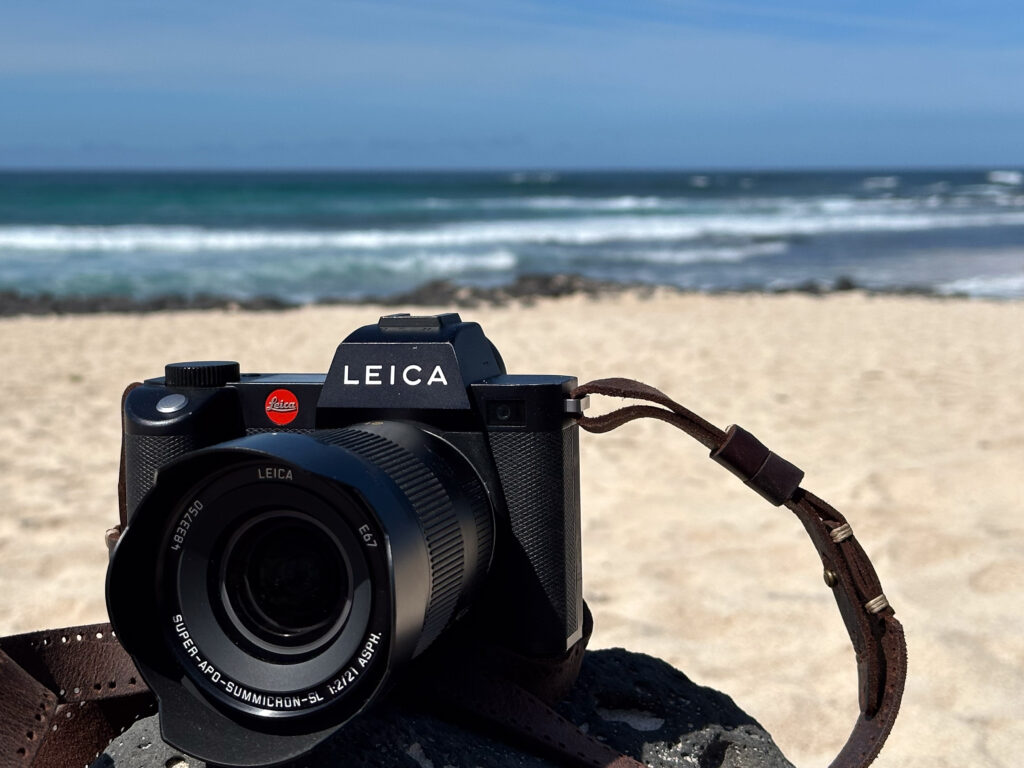
iPhone 14 Pro
A maximum magnification of 1:53
(smallest object field, 127 x 191mm)
This is as a result of the even closer focus distance of 0.21 metres. In fact, the other lenses have a barely perceptibly larger magnification (with a smallest object field of 120 x 180mm). This difference isn’t relevant in practical use.

The same body size: 102mm x 73mm
the lenses vary a little in weight, but are all between 700 and 800 gm without their lens-hood. The Leica 21mm Super-APO-Summicron-SL is 789 gm. All the lenses have an E67 filter thread.

Leica SL2 1/400th f/6.3 ISO 100
AF System with Dual Synchro Drive
Autofocus speed is limited by the mass of the lens elements moved whilst focusing and the travel of the elements between the closest focus and infinity.
The APO SL lenses employ two extremely light focusing elements, which combine in their lens concept based on double internal focusing.

Leica SL2 1/1250th f/4.5 ISO 100
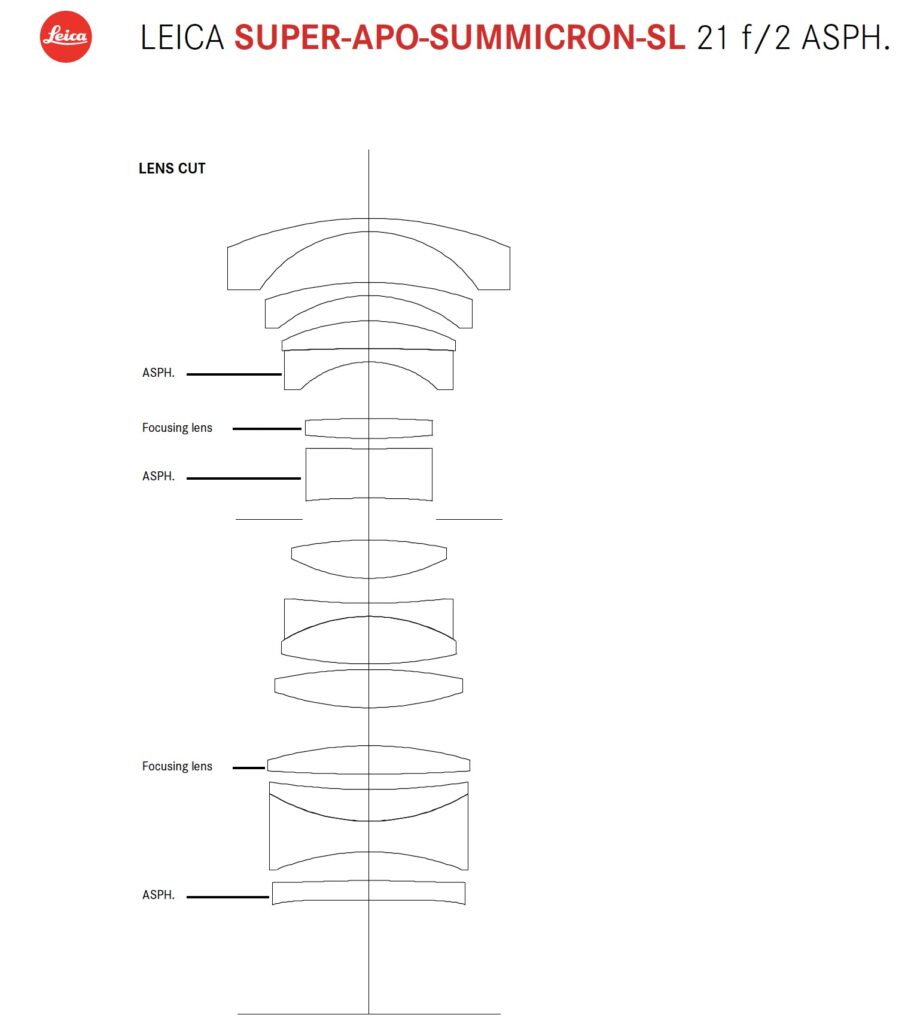
Lens design
The Leica 21mm Super-APO-Summicron-SL has 14 lenses arranged in 3 groups, it has 3 Aspherical elements and 2 floating elements. In addition, most of the lens elements are made of a special custom glass which exhibits anomalous partial dispersion — where light is higher or lower in a limited range of wavelengths than in the rest of the spectrum.
The MTF curves are excellent, and show very little penalty of shooting at f2 (or close up) and bear out Peter Karbe’s “Why Stop Down” mantra. They are perhaps not quite as earth-shattering as those for the 35 APO Summicron SL, but quite as good as those for the 28mm.
Image quality
So much for numbers and graphs, does it take good pictures? Hopefully, the samples here answer the question!
As you would expect, for landscape and architectural photography it performs brilliantly, with very little distortion, wonderful colour and exceptional contrast.

Leica SL2 1/200th f/8 ISO 100

Leica SL2 1/2000 f/4 ISO 100
More challenging are the images with some sharp areas and lots of out of focus area, and this is something which often challenges wide-angle lenses (think of nervous bokeh and nasty roll-off between in and out of focus areas). The Leica 21mm Super-APO-Summicron-SL is properly part of the APO team, with incredible detail right up to the 0.21 minimum focus distance, a lovely roll-off to out of focus and then an excellent creamy and delicate bokeh.
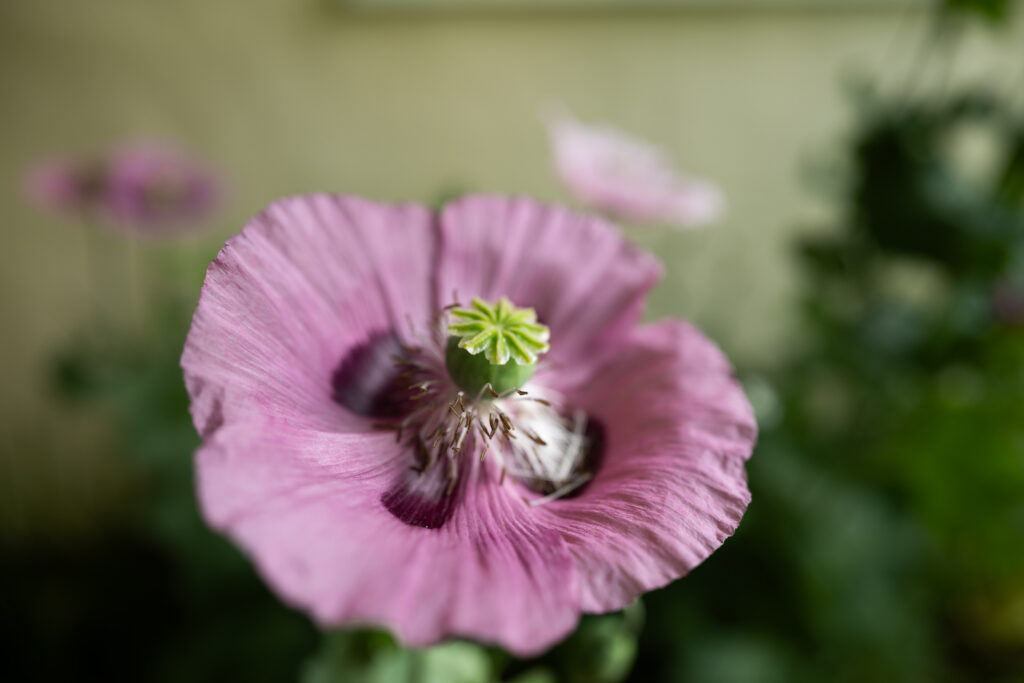
Leica SL2 1/500th f/2 ISO 100
Conclusion
There are now six lenses in the Leica APO Summicron range for the SL cameras:
- 21
- 28
- 35
- 50
- 75
- 90
Hopefully, there will be more to come — it would be lovely to see a 24 and a 135 at least (if it would fit in the form factor).
But the real point is that Leica has produced a complete range of really high-quality lenses for the SL system.
More than that, all lenses are all the same size and form factor, and they all have the same magnification ratio.

Leica SL2 1/200th f/4 ISO 100
Leica have eschewed the bragging rights of very large apertures while still managing to produce the effect of the limited depth of field those lenses provide.
The image quality is exceptional, and consistent across the range of lenses. I think it’s a fantastic achievement — the ‘best’ is difficult to define, but there can be few better lenses than these.

Leica SL2 1/800th f/7.1 100 ISO
Acknowledgements
First, thank you to Emma, who not only puts up with me testing the gear, but also writing the articles.
Thanks also to Steffen Rau, Product Manage at Leica for being patient and helpful, and providing extra information required for finishing this article.





Above, clockwise: Sunburst Leica SL2 1/2000th f/7.1 ISO 100; Rose Bay Willow Herb Leica SL2 1/320th f/16 ISO 100; Selfie at the Mothership
Leica SL2 1/100th f/3.5 ISO 100; David’s Ferrari Leica SL2 1/80th f/2 ISO 100; Leica, Leica SL2 1/100th f/2 ISO 100
Read more reviews from Jonathan Slack
Visit Jonathan’s website
Want to contribute an article to Macfilos? It’s easy. Just click the “Write for Us” button. We’ll help with the writing and guide you through the process.






Thanks, Jono, for this wonderful review. In most cases, reviews might be interesting or even competent but the images poor. In your case, the practical photography is up to your technical knowledge. I am in awe. And in the hands of a talented photographer, the new 21 must be a dream come true. Thanks for sharing! Jörg-Peter
Thank you Joerg-Peter – you’re too kind, but it’s much appreciated.
It’s certainly a lovely lens, I’m saving up!
All the best
Jono
I’ve been waiting what seems like forever for this and in the meanwhile bought the Sigma dg dn 20mm f1.4 for some night work projects.
I have been staggered by how good it it, the most flat field wide angle lens I have ever used, sharp across the field wide open. It’s big but it is unbelievably good.
I may stick with the Sigma.
Great review.
Hi There Mark
Sigma have been really good at wide angle lenses for several decades, and they just get better. I’d love to try the 20 f1.4, it sounds like a great lens.
. . . and thanks!
All the best
Jono
I purchased the absolutely spectacular Sigma 21/1.4 as well for my SL2-S.
Now Leica is blaming Covid for years of late delivery. Strangely Sigma and Panasonic manage to deliver.
Hi Jono,
I really appreciate what you have written here about chromatic aberration, and Leica’s efforts to control this both at point of focus, as well as OOF elements in the field. It is only since Leica started expanding the ranks of their APO lenses, coupled with 40 and 60 mp sensors, that I have had to come to terms with the presence of CA in my photographs.
I am not an SL user, but an M one, and own both the 35 and 50 APO Summicrons which are amazing. But I also use other lenses. Recently I was given to test a Light Lens Lab replica of the first generation 35/1.4 Aspheric. (I am awaiting a bit more technical info before posting a review here FWIW). I had sold my original 35/1.4 AA a couple of years ago because it was simply worth too much to keep, and was super pleased to have its ghost, as it were, once again in my possession to test. It performed admirably, but there was axial CA much in evidence on high magnification of edges in the image. I had never actually registered the existence of this CA before, especially when most of my images were on monochrome film. So I did a direct comparison with the 35/2 APO Summicron Aspheric, and saw that the CA was mostly gone.
So, my question. Was I mostly blind to this before, or similarly, was CA not so much of an issue when it was just part of what we had to live with? Those questions are similar, but not exactly the same. Do all Leica M wide angles that are not APO have enough of this problems that we could possibly expect new lenses?
TIA.
Ed
Hi There Ed
Interesting points all.
I also have the 35 and 50 M APO lenses and love them both – understandably (considering the size) they don’t deal with the CA as well as the SL lenses, but they are very good at it.
I think Film is more forgiving of CA then digital sensors, which is part of the answer, the other part is that digital resolution is much higher, and we will all insist on looking at images at 100% (which clearly becomes less and less relevant as the resolution gets higher).
If you really want to see some CA try shooting the Noctiluxes wide open! At least it’s easy to deal with in Lightroom.
I’m really interested in the Light Lens Lab lenses – it would be great to do a comparison with an original AA (although I imagine that in both cases there is likely to be quite a lot of sample variation). At any rate I’ll be fascinated by your article.
I don’t think that Leica WA lenses are particularly susceptible – indeed I don’t think it’s more of a problem with wide angle lenses. Personally I’d love to see a 28 APO, but I’m not sure that Leica really want to make one, and anyway the 28 Summilux Asph is actually very free of CA.
All the best
Jono
Thanks for the detailed reply, Jono. I have the first version of the 28/2 Summicron and it has a bit of CA, but not so much as the 35 AA replica. The 35/2 APO Aspheric does pretty well here, but it too has just a smidgen. Never thought to try my Nocti , because that sort of pictorial fidelity is not what I would use it for. But I will make the test!
I think with film, the only time that CA has interfered with my output has likely been trying to take backlit pictures of cholla cactuses in the desert. They look so amazingly photogenic — they glow — but neither my wife when she was shooting Nikons, nor myself could make a slide image that really caught what we were seeing. I did better with a Hasselblad than a Leica here, though. I now think that CA on the backlit spines interfered. The spines looked super sharp on film, but not “right” somehow. Perhaps someday I might again get to the desert with my APOs.
Best wishes,
Ed
I’ll never own an SL, but I believe very very few people can make a photo of their kitchen into a thing of great beauty. I just keep staring at it….
Hi There Kathy
What a lovely thing to say – Emma says you shouldn’t look too closely (she would certainly have tidied it up first had she known!). At any rate it is largely of Emma’s making, and we love it as well!
All the best
Jono
Whenever I see a photo that grabs me emotionally, or that I think I can learn from, I download it and put it in the Cloud.
That way, I can savor the photo, say with a cup of Japanese green tea or later, in the evening, with a fine beverage.
Good photos are meant to be enjoyed like any of the finer things in life.
Oh, wait: I should add ‘IMHO’ 🙂
You certainly shouldn’t say ‘IMHO’. Especially not for such a good way of appreciating pictures.
There are some pots of very good Chinese green tea in that picture (hard to make out), given to us by our daughter in law (whose mother is a tea farmer in Longjing).